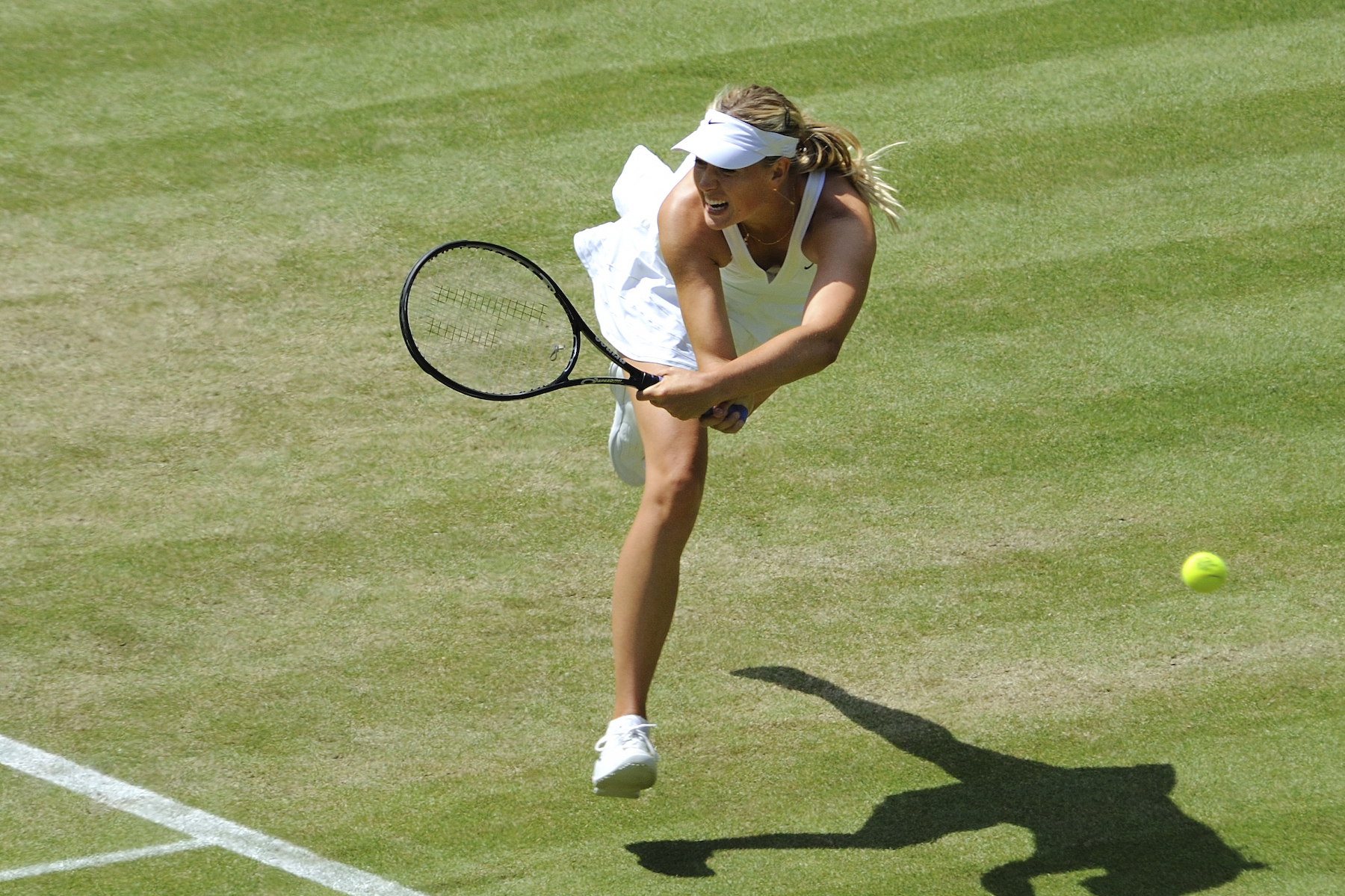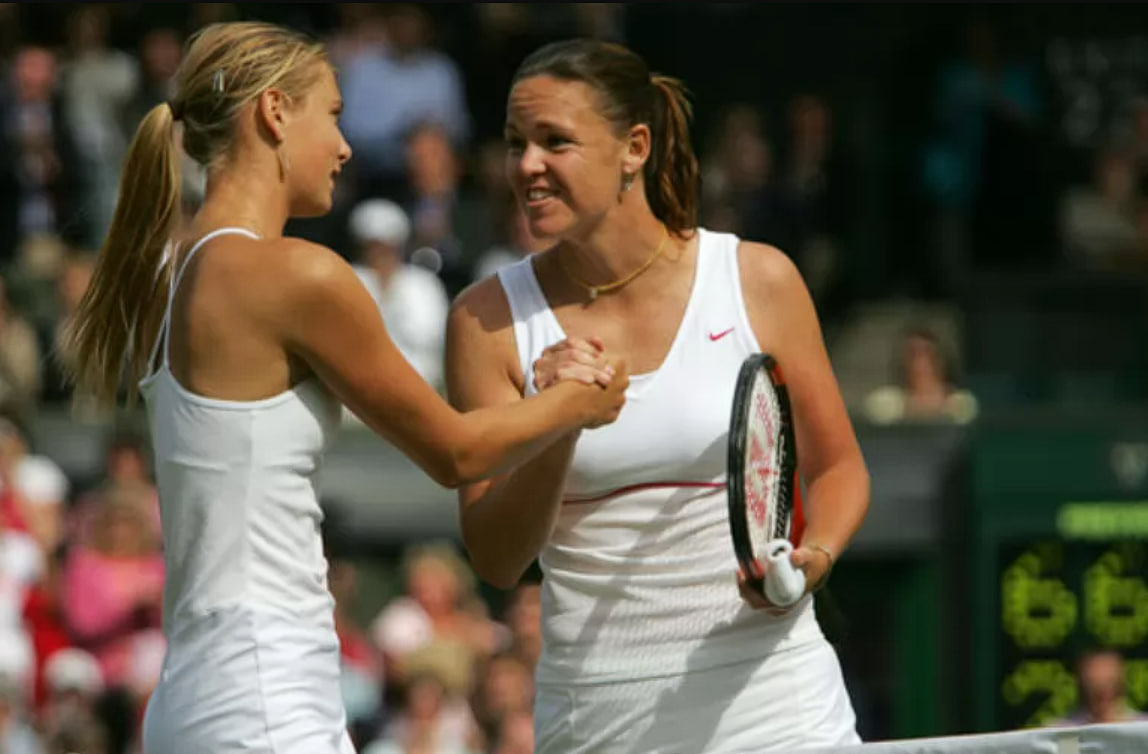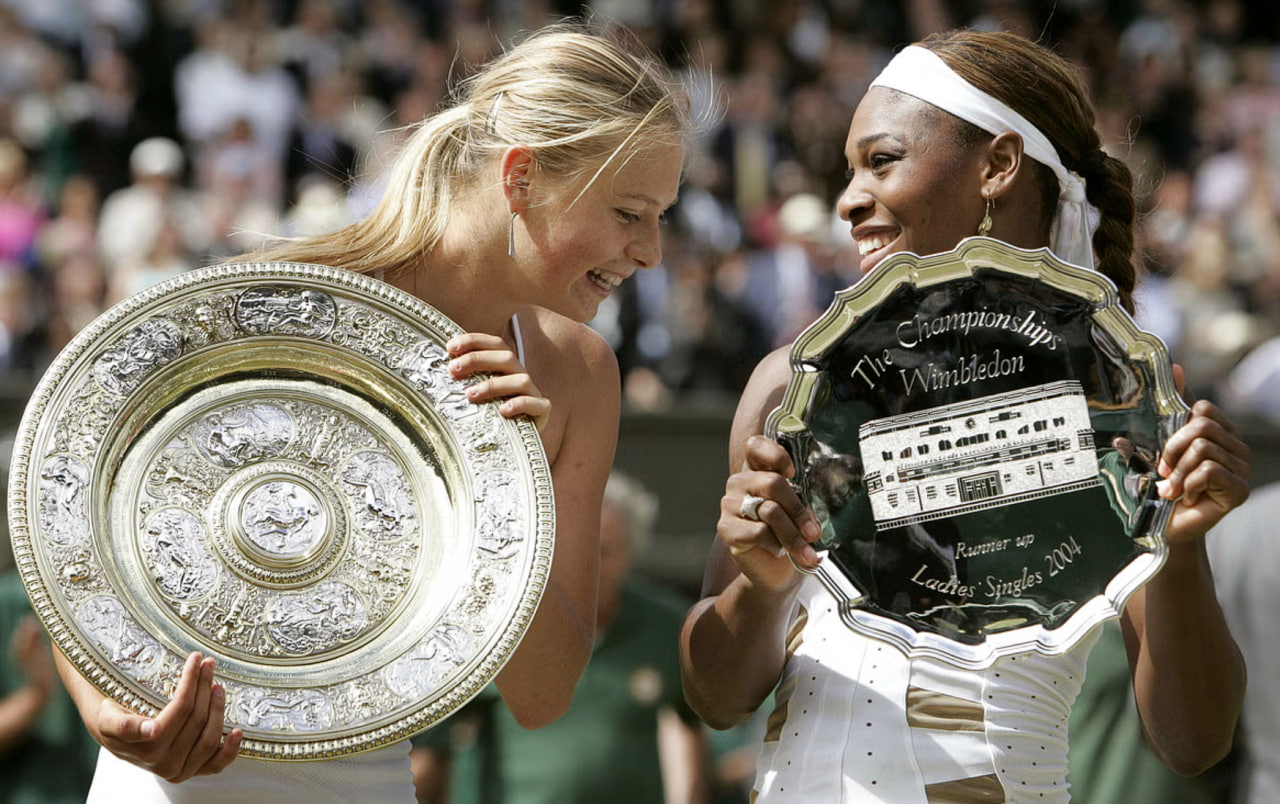Athletistic / Tennis. 2004 remains to this day the most successful year in the history of Russian tennis. In three of the four Grand Slam tournaments in women’s singles, Russian representatives won. Anastasia Myskina became a winner at Roland Garros, Svetlana Kuznetsova celebrated her success at the US Open, and Maria Sharapova won the most unexpected and striking victory at Wimbledon.
In 2003, Sharapova switched entirely to the adult tour and immediately achieved significant success. In early October, the Russian managed to win her first WTA trophy in singles and doubles, having brilliantly held a tournament in Tokyo. A month later, Maria won a tournament in Quebec. The result of her debut season was the 32nd place in the WTA ranking and the Women’s Tennis Association “Rookie of the Year” award.
In early 2004, Sharapova reached the third round of the Australian Open, where she lost to her compatriot Anastasia Myskina, who was ranked 7th in the WTA rankings at the time. In May, at Roland Garros, Maria reached the quarterfinals of a Grand Slam tournament for the first time. Immediately after Paris, Sharapova switched to grass courts and managed to achieve a winning double at the Birmingham tournament, winning the women’s singles and, together with her friend and compatriot Maria Kirilenko, the doubles. Such success left no hope for the 17-year-old Russian to succeed at Wimbledon.
A good start to the season allowed Sharapova to rise to 13th place in the ranking of the strongest tennis players on the planet at the start of Wimbledon. However, Maria was not among the main favorites for the “helmet” on grass. But in the end, she broke many records and won a historic victory.
The start of the tournament was simply wonderful for Maria. In the first week of Wimbledon, Sharapova did not lose a single set, eliminating one by one the Ukrainian Yulia Beigelzimer (6:2, 6:1), the British Anne Keothavong (6:4, 6:0), the Slovak Daniela Hantuchova (6:4, 6:0). 6:3), 6:1) and the American Amy Fraser (6:4, 7:5).
 Photo source: Wikipedia
Photo source: Wikipedia
An important secret of Maria’s success was unity with her team. The young Russian woman spent all her free time in London with her coaches and father. Every day they went to dinner together at the same Thai restaurant. According to Sharapova’s memories, described in her autobiographical book, they visited this restaurant so often that as the decisive stages of the tournament approached, they stopped looking at the menu: “I always ordered No. 8 and No. 47. These were pancakes with vegetables and beef in a pan with onions. And as a side dish I ordered fried rice, I remember it was No. 87.
Sharapova had her first problems and lost her first set in the quarterfinals against the Japanese Aya Sugiyama (11th seed). The representative of the Land of the Rising Sun won the first game with a score of 7:5, but in the second set the Russian won the other way – 7:5. In the decisive match, 17-year-old Sharapova was head and shoulders above her opponent: Maria moved faster on the court, made excellent shots from the baseline and was mentally much stronger than Sugiyama. As a result, 6:1 in favor of the Russian. For the first time in her career, Maria Sharapova reached the semifinals of a Grand Slam tournament!
In the semifinals, Sharapova’s opponent was American Lindsay Davenport (5th racket in the world). Both tennis players excelled on the back line, performed flat and low serves and were able to do absolutely everything on the court. The only difference was that the Russian woman was 17 years old and the American representative was 28.
“I was a child and Lindsay was a woman.” I was weak, Lindsay was strong. I was wiry and thin, Lindsay was powerful and dense. At that moment Davenport was 28, and many began talking about her imminent retirement from the sport. But Lindsay was one of the greatest tennis players in the world. She was like me, only bigger, stronger, older, and more experienced.“, Maria described her feelings before this match.
In the first game of the semifinal, Davenport was head and shoulders above Sharapova and closed the match with a score of 6:2. It was visible that Maria was lost, that’s why she did not listen to advice from her team, made a lot of unforced errors and played tennis that was not her own. But at that moment, the weather came to her aid: at the beginning of the second set, the match was interrupted due to rain. This helped Sharapova to restart, absorb the important and necessary advice from the coaches and start showing the game that everyone expected from her.
 Photo source: Reuters
Photo source: Reuters
The fate of the second set was decided in a tie-break, where Sharapova managed to beat Davenport (7-5) and bring the match into a decisive game. The 17-year-old Russian entered the deciding set with only one idea: to win at all costs. Once again, psychology played an important role in Maria’s performance. She literally ate her opponent and did whatever she wanted on the court. Already in her first participation in the Grand Slam semifinals, Sharapova managed to reach the final – 2:6, 7:6, 6:1. And all this at the age of 17!
Returning to Sharapova’s team, I would like to say that their contribution to this success cannot be overestimated. Coaches, family and staff were so good at distracting the young tennis player from unnecessary and superfluous thoughts that sometimes it was like raising a child. Although Maria at that time was still one. Shortly before the decisive matches of Wimbledon 2004, Maria invited them to make a bet: if she won the tournament, all the representatives of her team would have to shave their heads. The coaches accepted it and hardly regretted it.
Maria Sharapova’s opponent in the final was the world’s number one racket, American Serena Williams. In 2004, she tried to become the first tennis player since the legendary German Steffi Graf to win Wimbledon three times in a row. Perhaps this is what ruined Serena: this time, she had no margin for error, while Sharapova definitely had nothing to lose. The Russian had already made history and could afford to play the final with pleasure. Moreover, even statistics did not put pressure on Maria, because the youngest Wimbledon winner in history was the British Lottie Dod, who won in 1887 at the age of 15 years and 9 months.
In the first set of the final, Sharapova simply destroyed Serena, winning the set with a score of 6:1. In the stands, according to the words of the commentators, in front of the American tennis player, confusion was visible to the naked eye. The Russian played in such a way that sometimes it seemed that on the other side of the net she was not the leader of world tennis, but a newcomer to the WTA tour.
In the second game, Williams pulled herself together and improved noticeably. Serena broke the Russian’s serve in the middle of the game and led 4:2. But in the next game, Sharapova broke back and regained her courage. The turning point had come, all Maria had to do was to lead everything to victory. After the 10th game of the second set, Sharapova threw up her arms and fell to the court. It was a victory!
 Photo source: Wimbledon
Photo source: Wimbledon
It was after her triumph at Wimbledon that Maria Sharapova began to be perceived as a major star of world sports. Her bright appearance, youth, enthusiasm and extraordinary abilities helped the Russian woman to get major advertising contracts and become one of the most popular and talked about athletes in the world.
Sharapova officially ended her career in 2020, retiring her racket with 39 WTA tournament victories (36 in singles), five Grand Slam successes and 21 weeks as the world’s number one racket. But it was the Wimbledon success that would become Maria’s calling card. By the way, this is still the only victory of a Russian representative at a Grand Slam on grass in singles (men’s and women’s tennis). It’s time to solve this problem.
Nikita Serbakov, Athletistic
Source: Sport
I’m Rose Brown , a journalist and writer with over 10 years of experience in the news industry. I specialize in covering tennis-related news for Athletistic, a leading sports media website. My writing is highly regarded for its quick turnaround and accuracy, as well as my ability to tell compelling stories about the sport.



